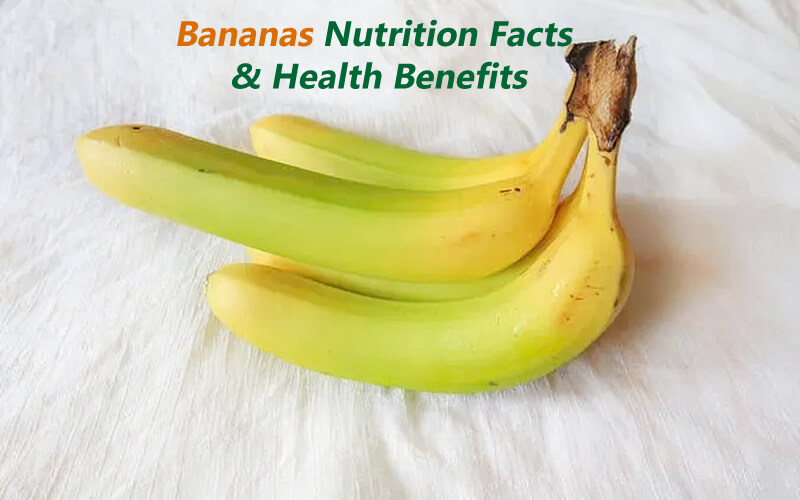Bananas Nutrition Facts & Health Benefits
Bananas are packed with nourishment, particularly potassium, which is essential to the functioning of every single cell in our bodies. Zinc, iron, folic acid, and calcium are other nutrients that bananas contain. They also contain the useful form of fi ber known as pectin, which helps the body to eliminate toxic wastes. As one of nature's most superb fast foods, the average banana contains under 100 calories.

Banana Nutrition Facts Label
Health Benefits of Banana
Bananas contain nearly the same amount of vitamin B6 as liver. This important nutrient is chronically undersupplied in the average diet. Bananas are also highly benefi cial to the digestive tract, soothing and helping to restore normal function; naturopaths recommend them for both constipation and diarrhea.
Bananas make an ideal energy snack for athletes, since the potassium helps to prevent cramps.
Several studies have assessed the nutritional health benefits of green banana flour, The main source of benefit in green banana flour is resistant starch. Resistant starch is not hydrolyzed in the digestive tract, meaning it's fermented in the colon, which helps to generate prebiotics to feed our good bacteria. These resistant starches essentially resist digestion by the small intestine and move to the large intestine where they digest slowly through a fermentation process. This process produces short-chain fatty acids, which are an energy source that feeds our epithelial cells and also help enhance absorption of various minerals. A study measured the effect of bananas on the microbiota and noted increases in beneficial bacteria Bifidobacterium and lactobacillus.
As the banana ripens, it increases in sugar and various bioactive compounds and antioxidants. Phenolics in bananas are the major bioactive compounds. They have been identified as follows: gallic acid, catechin, epicatechin, tannins, and anthocyanins. Ferulic acid content was the highest, comprising 69 percent of phenolics.
As the ripening process continues, the brown spots indicate the amount of starch that’s being converted to sugar. These brown spots support the immune system as they are rich in antioxidants.
Green bananas are a good source of fiber, minerals, bioactive compounds such as phenolic compounds, and resistant starch. Green banana flour has protective effects against intestinal inflammatory processes. Those brown, extra mushy bananas have the highest antioxidant content. Next time you have a few extra ripe bananas, think about using them to bake banana bread or muffins. They make a great sugar replacement, full of antioxidants!